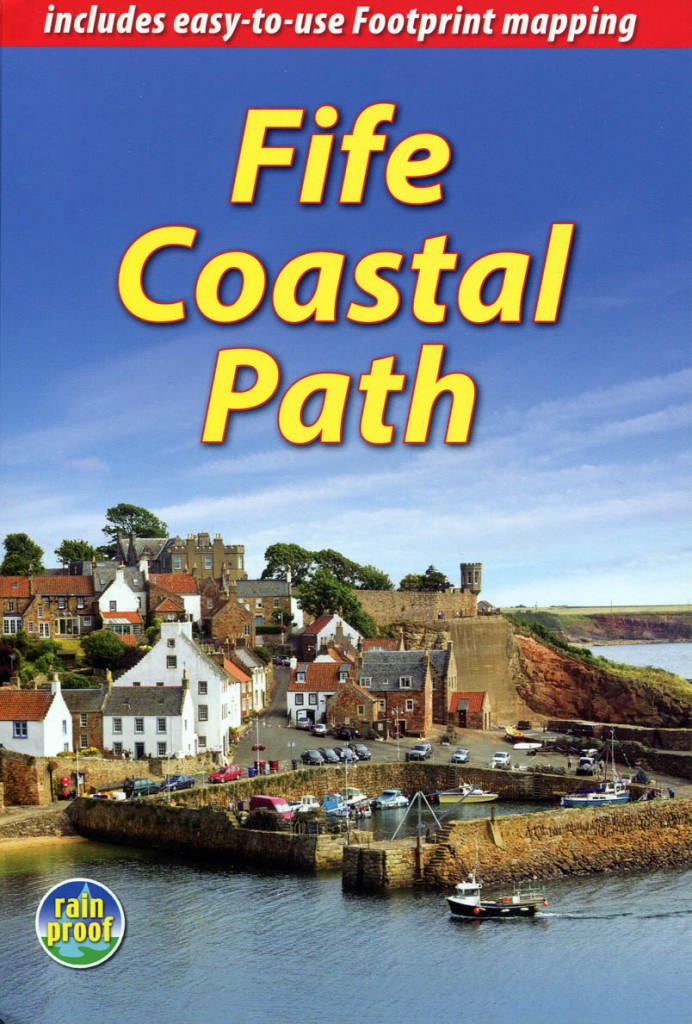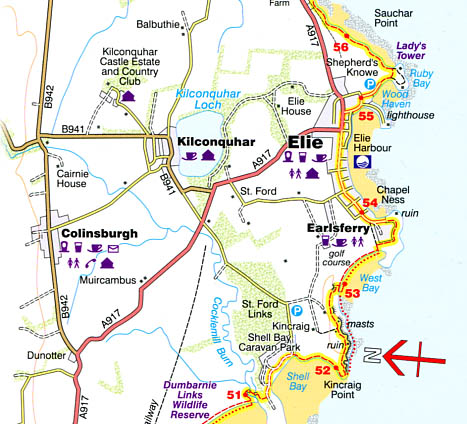This guide to the route around the coast of the Kingdom of Fife is comprehensive and well researched and its format should allow anyone tackling the long-distance walk to pack only the book to help them find their way.
The format is slightly bigger than A5 and the core of the guide is ring-bound, which makes it easy to fold so just a single page is displayed to refer to while on the hoof.
It is printed on ‘rainproof’ paper and enclosed in an outer cover that folds out to display a key to the guide’s maps and, on the opposite side, an overview of the route from Kincardine on the Firth of Forth to Newburgh on the Firth of Tay, with the 188km (117-mile) route split into nine day-sections, with references to the chapters of the guide.
The original Fife Coastal Path ran from the Forth Bridges to Newport-on-Tay, and was extended by 57km (35 miles) with additions either end in 2011 to encompass the whole kingdom.
The authors point out the logistical problems of getting to and from the new termini of the route. Reading the book’s descriptions of the various permutations possible when tackling the route might put off the faint-hearted and there’s the added complication of having to take account of low-tide times at a couple of points, including the Elie Chainwalk, Scotland’s ‘hidden via ferrata’.
Accommodation a reasonable price seems to be rare in Fife, so anyone planning their walk needs to heed the advice of the authors.
Fife Coastal Path has information on the area’s geology and former industries, such as lime and coal production, the remnants of which can still be seen, and the more surprising linoleum manufacture. Fishing, once the mainstay of many villages along the route, is in decline, and golf is now seen as one of the kingdom’s major industries.
Flora and fauna along the way are detailed, and each day’s recommended walking has a chapter, with maps, photos and detailed route descriptions.
The guide is well researched, with plenty of facts to enhance a walker’s experience of the route, and it pulls no punches when describing the less scenic sections of the Fife Coastal Path.
The Elie Chainwalk, which involves a little aided scrambling, has a couple of pages devoted to it, along with appropriate warnings, so no-one should be unaware of the risks. Oddly, Bardwell and Megarry recommend traversing it from the far end if walking the usual anti-clockwise way, and then getting lifts at each end.
Despite the caveats, the Fife Coastal Path has lots to attract the walker, and it is a far from arduous route compared to many long-distance paths. Scenery is varied and there are plenty of attractions along the walk.
Line diagrams with walking distances in miles and kilometres between significant points accompany the route descriptions and the maps are uncluttered, though at the curious scale of 1:45,000. Try finding a compass with that romer scale.
Fife Coastal Path is a handy self-contained guide to this interesting route, and is nicely illustrated with photographs throughout and is easy to follow. The maps are detailed enough for walkers undertaking the route to be able to dispense with a separate map. This guide will suffice.
Fife Coastal Path by Sandra Bardwell and Jacquetta Megarry
Published by Rucksack Readers
Price £12.99


Jacquetta Megarry
12 October 2015Thanks so much for this detailed and generous review. It's a very thorough review and we appreciate it greatly.
May I (as coauthor and publisher) be allowed two brief comments?
a) The curious scale is a direct result of the unusual shape of the route and the size of our pages; in fact the reason we abandoned our normal format (with drop-down map flap) is that it simply couldn't cope with the shape of the route. Making the scale a rounder number (e.g. 1:50,000) would have made the maps smaller and more cluttered, but we do show mileage marks along the route.
b) The reason we recommend tackling the Chainwalk from east to west is one of safety: at my first attempt (alone, in winter, on a day of huge tides) I fell off the easternmost, most difficult chain (into very cold water, with some risk of injury) and decided to abandon the rest and return another time to follow somebody with experience (successfully). If people are going to find the Chainwalk too hard, it's better that they find that out from the start, so they can retreat if need be. There is no question of "getting lifts" (no roads!), you simply walk a little further along the clifftop. This is all explained on page 47.